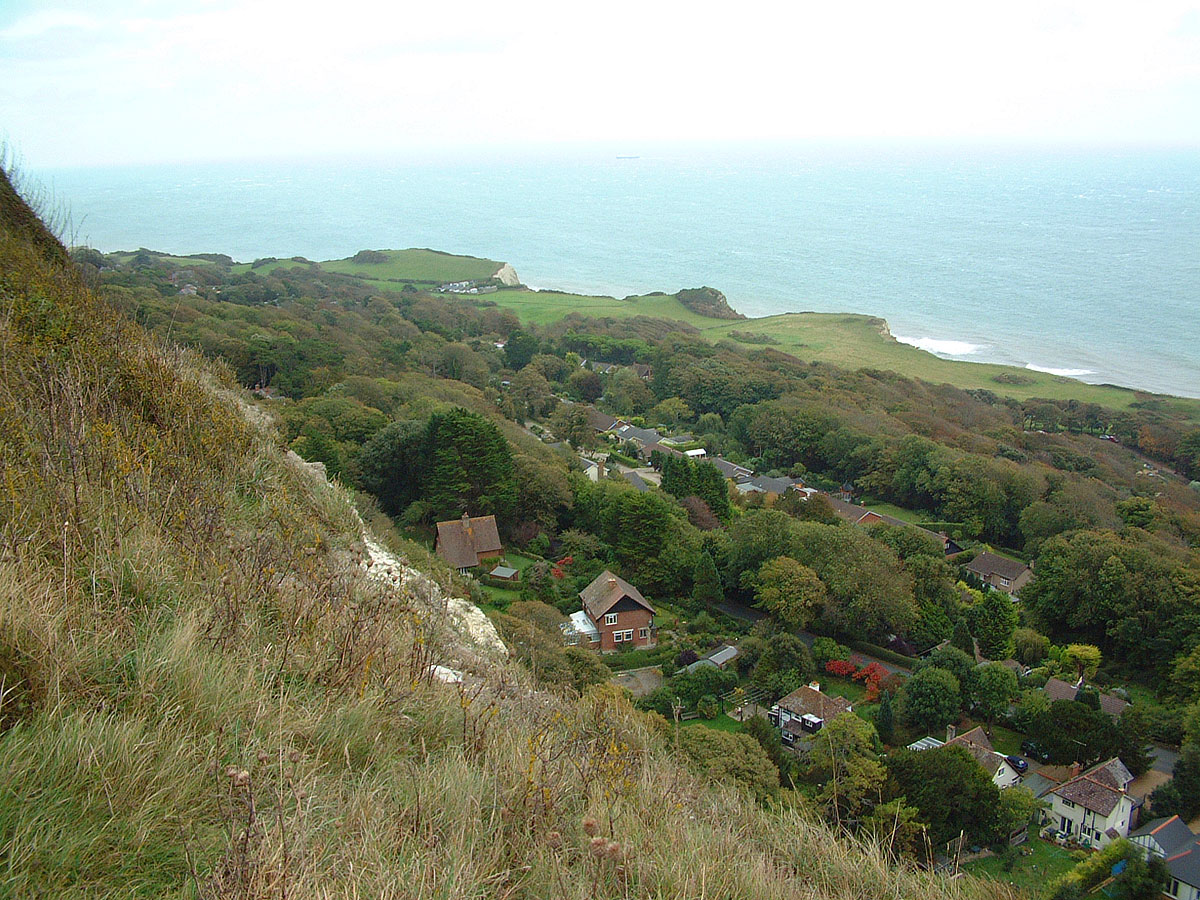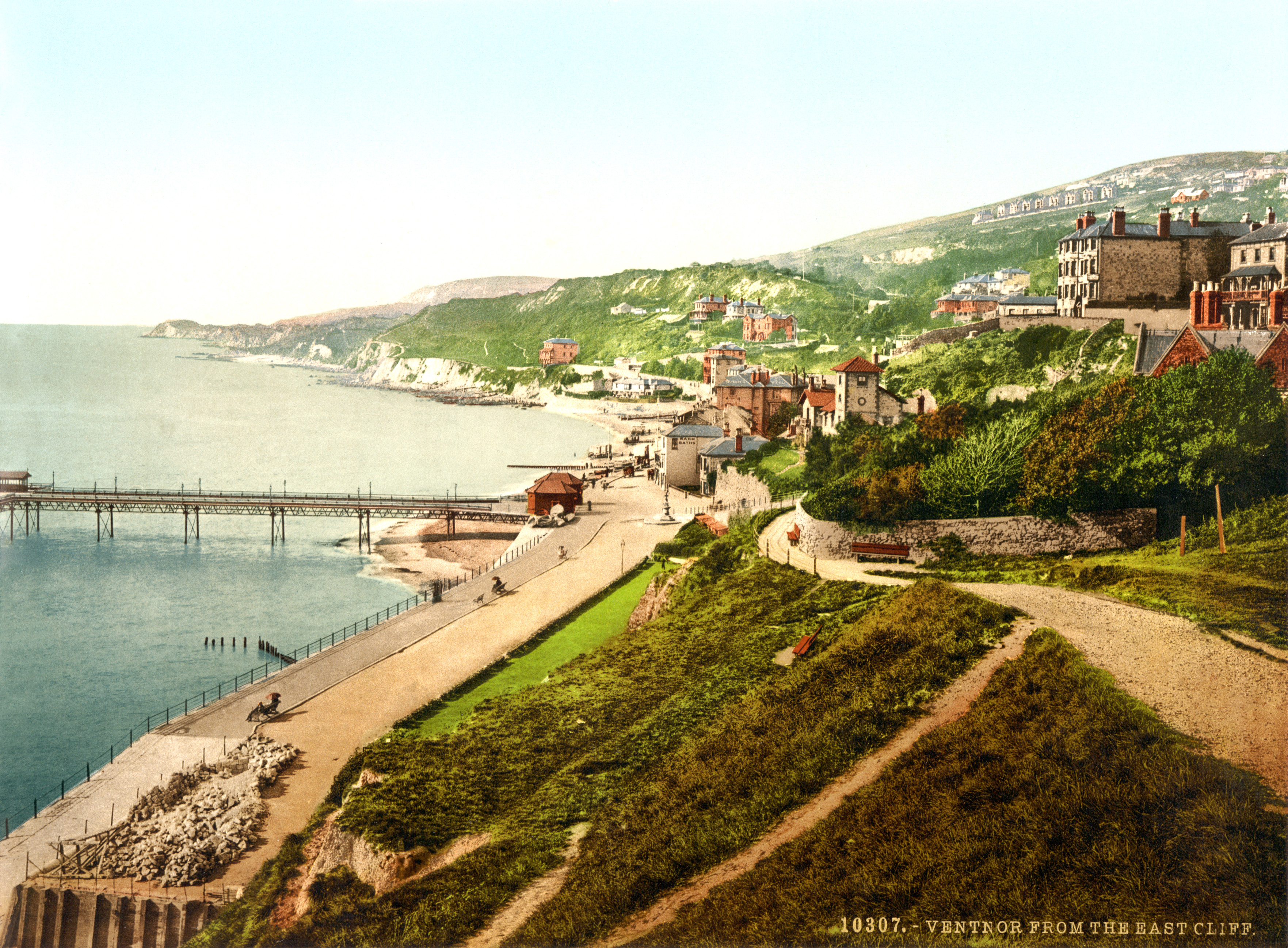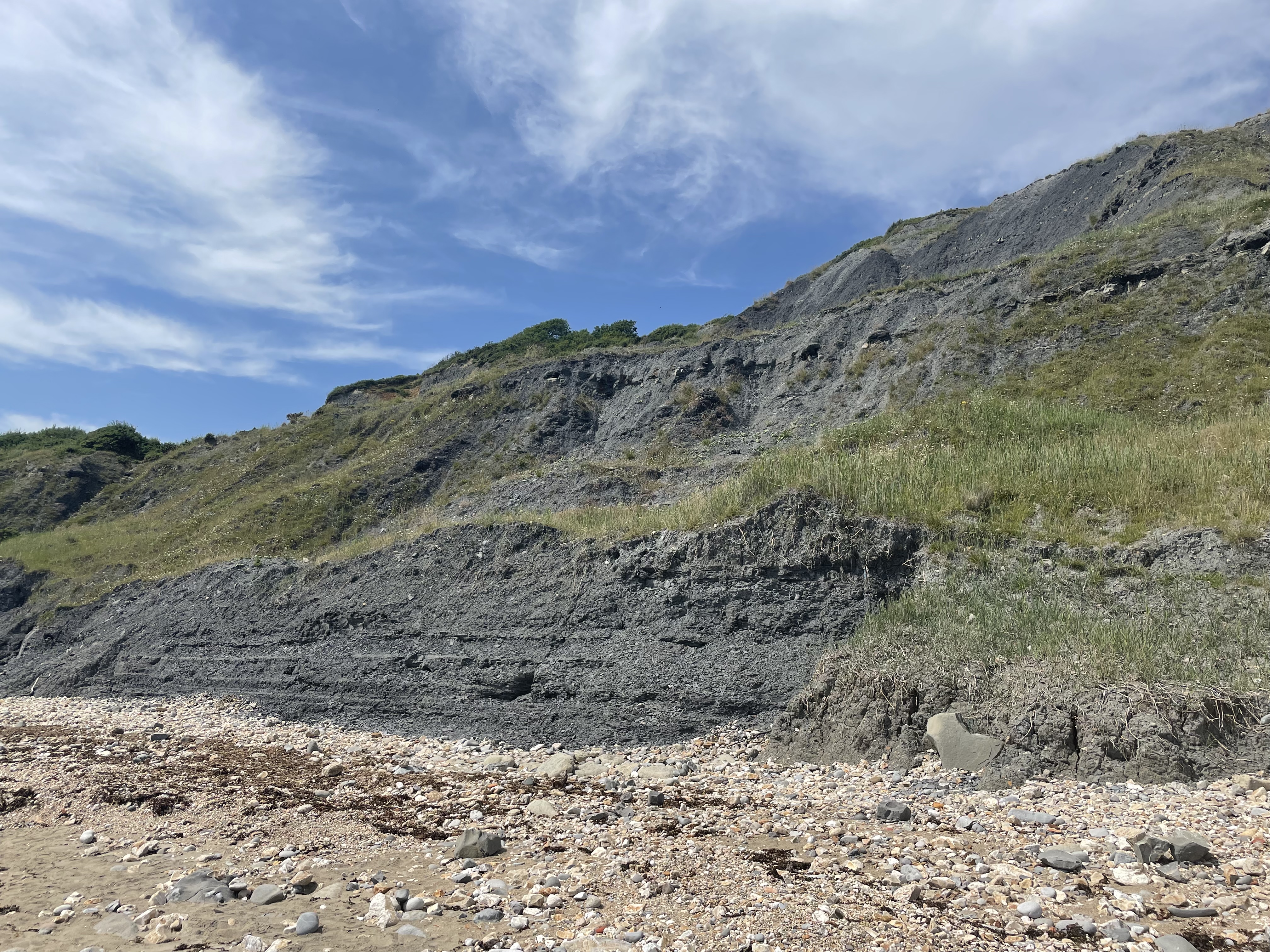|
Undercliff
The Undercliff is the name of several areas of landslide, landslip on the south coast of England. They include ones on the Isle of Wight; on the Dorset-Devon border near Lyme Regis; on cliffs near Branscombe in East Devon; and at White Nothe, Dorset. All arose from Slump (geology), slump of harder stratum, strata over softer clay, giving rise to irregular landscapes of peaks, gullies and slipped blocks, that have become densely vegetated due to their isolation and change of land use. The Kent coast at Folkestone and Sandgate, Kent, Sandgate also has similar undercliff areas. Isle of Wight The Undercliff on the Isle of Wight skirts the southern edge of the island from Niton to Bonchurch. A favourable climate here has resulted in a semi-tropical environment, covered by lush vegetation. The microclimate of warm sunshine, moist air and few winter chills was recognised by leading physicians in Victorian era, Victorian times as a beneficial environment for sufferers of respiratory dis ... [...More Info...] [...Related Items...] OR: [Wikipedia] [Google] [Baidu] |
White Nothe
White Nothe (meaning "White Nose") is a chalk headland on the English Channel coast at the eastern end of Ringstead Bay, east of Weymouth in Dorset, England. The area is well known for its geology and fossils. Its flanks are the result of prehistoric landslides and the inaccessible slopes of the undercliff provide a secluded wildlife habitat. A zigzag path up the cliff is believed to be one of the locations alluded to as a smuggler's path in the British children's book '' Moonfleet'' by J. Meade Falkner. Walking to the base of White Nothe along the shore from Ringstead Bay is possible, but it is cut off at high tide, so much care should be taken. At the top of the Smugglers path, a protruding nose shape comes out of the white cliff, giving the name to the area. The area is partly owned by the National Trust. From the top of White Nothe, to the east, the chalk headland of Bat's Head can be viewed. Walking east along a clifftop path below the summit of Chaldon Hill is possible ... [...More Info...] [...Related Items...] OR: [Wikipedia] [Google] [Baidu] |
Ventnor
Ventnor () is a seaside resort and civil parish established in the Victorian era on the southeast coast of the Isle of Wight, England, from Newport. It is situated south of St Boniface Down, and built on steep slopes leading down to the sea. The higher part is referred to as Upper Ventnor (officially Lowtherville); the lower part, where most amenities are located, is known as Ventnor. Ventnor is sometimes taken to include the nearby and older settlements of St Lawrence and Bonchurch, which are covered by its town council. The population of the parish in 2016 was about 5,800. Ventnor became extremely fashionable as both a health and holiday resort in the late 19th century, described as the 'English Mediterranean' and 'Mayfair by the Sea'. Medical advances during the early twentieth century reduced its role as a health resort and, like other British seaside resorts, its summer holiday trade suffered from the changing nature of travel during the latter part of the century. Its ... [...More Info...] [...Related Items...] OR: [Wikipedia] [Google] [Baidu] |
Lyme Regis
Lyme Regis is a town in west Dorset, England, west of Dorchester and east of Exeter. Sometimes dubbed the "Pearl of Dorset", it lies by the English Channel at the Dorset–Devon border. It has noted fossils in cliffs and beaches on the Heritage or Jurassic Coast, a World Heritage Site. The harbour wall, known as The Cobb, appears in Jane Austen's novel ''Persuasion'', the John Fowles novel ''The French Lieutenant's Woman'' and the 1981 film of that name, partly shot in the town. A former mayor and MP was Admiral Sir George Somers, who founded the English colonial settlement of Somers Isles, now Bermuda, where Lyme Regis is twinned with St George's. In July 2015, Lyme Regis joined Jamestown, Virginia in a Historic Atlantic Triangle with St George's. The 2011 Census gave the urban area a population of 4,712, estimated at 4,805 in 2019. History In Saxon times, the abbots of Sherborne Abbey had salt-boiling rights on land adjacent to the River Lym, and the abbey once owned par ... [...More Info...] [...Related Items...] OR: [Wikipedia] [Google] [Baidu] |
Black Ven
Black Ven is a cliff in Dorset, England between the towns of Charmouth and Lyme Regis. The cliffs reach a height of . It is part of the Jurassic Coast World Heritage Site. Nearby is an undercliff with an ammonite pavement. The area is popular with tourists due to a number of fossils being found in the area. History The Black Ven has been historically renowned for paleontology. Mary Anning found an ichthyosaurus in The Spittles, and James Harrison found the first fossil remains of a ''Scelidosaurus'' while quarrying Black Ven in 1858. In 2001, the Black Ven and the whole of Lyme Bay became part of the Jurassic Coast World Heritage Site. Geology Black Ven has the largest mudslides in Europe, and this constantly brings new material (such as fossils) to the base of the cliff and beach. The reason for this is the types of stone found through the cliff. There is porous limestone, which lets the water on rough days flow through it, below which you will find clay, which lets water ... [...More Info...] [...Related Items...] OR: [Wikipedia] [Google] [Baidu] |
Branscombe
Branscombe is a village in the East Devon district of the English County of Devon. The parish covers . Its permanent population in 2009 was estimated at 513 by the Family Health Services Authority, reducing to 507 at the 2011 Census. It is located within the East Devon Area of Outstanding Natural Beauty, overlooking Lyme Bay. Branscombe has one of the South West's most scenic bus routes. AVMT Buses ruservice 899from Seaton to Sidmouth via Beer and Branscombe. History The name of the parish is probably Celtic in origin. It is made up of two words, "Bran" and "cwm". Bran is a well established Celtic personal or tribal name that may also mean "black" or "crow black". Cwm is a topographical term still in use in English as well as modern Welsh to describe a steep-sided hollow or valley. Thus the name may derive from the first Celtic family or tribe to take possession of the land, probably from the Dumnonii tribe, sometime between 2700 and 2000 BC. From the 17th to the 19th ... [...More Info...] [...Related Items...] OR: [Wikipedia] [Google] [Baidu] |
English Nature
English Nature was the United Kingdom government agency that promoted the conservation of wildlife, geology and wild places throughout England between 1990 and 2006. It was a non-departmental public body funded by the Department for Environment, Food and Rural Affairs (DEFRA) and gave statutory advice, grants and issued licences. The Nature Conservancy Council (NCC) (formerly the Nature Conservancy) was established by the National Parks and Access to the Countryside Act 1949 to cover nature conservation issues across the whole of Great Britain. The NCC was split into four by the Environmental Protection Act 1990—its English duties being given to English Nature. In Scotland, its functions were merged with those of the Countryside Commission for Scotland to form Scottish Natural Heritage, and similarly in Wales there was a merger to form the Countryside Council for Wales. A much smaller body, the Joint Nature Conservation Committee (JNCC), supported all three agencies. The Engl ... [...More Info...] [...Related Items...] OR: [Wikipedia] [Google] [Baidu] |
Steephill
Steephill is a hamlet near Ventnor, Isle of Wight, previously the location of a Victorian country estate with a castle-style mansion, Steephill Castle, which was demolished to build bungalows in the 1960s. Steephill itself now forms part of the suburban development westward from Ventnor. Steephill Cove, on the coast some 400 yards to the south, has several kiosks and self-catering cottages. Fish can be bought beneath a sign which states "Wheeler and Sons; Fishermen since the 1500s". The cove is accessible only on foot; it is about 200 yards from Undercliff Drive, and is on the Isle of Wight Coastal Path directly adjacent to Ventnor Botanic Garden. Steephill was the location of a country estate since the time of Hans Stanley, governor of the Isle of Wight, who built there in landscaped surroundings a rustic-style house called The Cottage during his first term of office 1764–1768. After his death the estate was purchased by Wilbraham Tollemache. It was his favourite residence u ... [...More Info...] [...Related Items...] OR: [Wikipedia] [Google] [Baidu] |
Niton, Isle Of Wight
Niton is a village on the Isle of Wight, west of Ventnor, with a population of 2,082. It has two pubs, several churches, a pottery workshop/shop, a pharmacy, a busy volunteer-run library, a medical centre and two local shops including a post office. The post office includes a pub and café that serves as a local meeting place. The village also offers a primary school with a co-located pre-school and nursery. Geography Niton village is split in half by a break in the inner cliff of the Undercliff, through which passes the main road. Upper Niton lies in a hollow and is set around a crossroads. The lower part of the village, below the inner cliff and above Reeth Bay, is known as Niton Undercliff, and was a small fishing hamlet up until the 19th Century. This part of Niton then flourished in Victorian times due to the popularity of Ventnor as a health resort, and many mansions and holiday cottages were built there. Mount Cleves House was originally constructed in the late 1700s ... [...More Info...] [...Related Items...] OR: [Wikipedia] [Google] [Baidu] |
Isle Of Wight Coastal Path
The Isle of Wight Coastal Path (or Coastal Footpath) is a circular long-distance footpath of 70 miles (113 km) around the Isle of Wight, UK. It follows public footpaths and minor lanes, with some sections along roads. Route The path is waymarked in both directions and can be started at any point, but is described here clockwise from the pier at Ryde (). Ryde to Sandown Ryde to Bembridge (7.5 miles) From the bus station by Ryde Pier, the path follows the Esplanade close to the beach. It passes Appley Tower and Puckpool Point before rejoining the coast road to Seaview. It then climbs inland on footpaths, skirting Priory Woods, before returning to sea level at The Duver near St Helen's Old Church. Then the path crosses the edge of Bembridge Harbour on the old mill wall, using Embankment Road to pass the houseboats in the harbour. The path then continues into Bembridge and to the Lifeboat Station. Bembridge to Sandown (5.5 miles) The path follows the coa ... [...More Info...] [...Related Items...] OR: [Wikipedia] [Google] [Baidu] |
Landslide
Landslides, also known as landslips, are several forms of mass wasting that may include a wide range of ground movements, such as rockfalls, deep-seated grade (slope), slope failures, mudflows, and debris flows. Landslides occur in a variety of environments, characterized by either steep or gentle slope gradients, from mountain ranges to coastal cliffs or even underwater, in which case they are called submarine landslides. Gravity is the primary driving force for a landslide to occur, but there are other factors affecting slope stability that produce specific conditions that make a slope prone to failure. In many cases, the landslide is triggered by a specific event (such as a heavy rainfall, an earthquake, a slope cut to build a road, and many others), although this is not always identifiable. Causes Landslides occur when the slope (or a portion of it) undergoes some processes that change its condition from stable to unstable. This is essentially due to a decrease in the She ... [...More Info...] [...Related Items...] OR: [Wikipedia] [Google] [Baidu] |
Charmouth
Charmouth is a village and civil parish in west Dorset, England. The village is situated on the mouth of the River Char, around north-east of Lyme Regis. Dorset County Council estimated that in 2013 the population of the civil parish was 1,310. In the 2011 Census the population of the parish, combined with the small parish of Catherston Leweston to the north, was 1,352. History The history of Charmouth dates back to the Iron Age when a Celtic tribe, the Durotriges, founded a settlement. Evidence of hill forts can still be seen in the area. The name Charmouth originated from the Saxon 'Cerne' meaning stony river, Charmouth was therefore known as 'Cernmunde'. Historian George Roberts wrote: During the Saxon period, the neighbouring coast was particularly subject to the invasions of the Danes, concerning whom so much has been written. In 787, the Danes, Northern men, or Normans, landed at Portland from three ships, to reconnoitre the country, which they did without interrupti ... [...More Info...] [...Related Items...] OR: [Wikipedia] [Google] [Baidu] |
Stonebarrow
Stonebarrow is a coastal hill and sea cliff in the county of Dorset on the south coast of England. It is a well known fossil hunting location, close to the coastal village of Charmouth. Geography Stonebarrow is located about east of Charmouth and west of the hamlet of Seatown. Stonebarrow Hill reaches an elevation of about 155 metres. The cliff face, part of which is known as Cain's Folly, is about 140 metres high, which is about 50 metres lower than the neighbouring Golden Cap, the highest cliff on the South Coast of England. Rock falls occur on the cliff face very frequently, continually exposing new fossils. There are a couple of examples of biological weathering, especially on the sandy-soils on lower-lying cliffs. Geology The Stonebarrow cliffs are of Jurassic age, becoming geologically younger further east (the rocks of Golden Cap are early Cretaceous). The bottom of Stonebarrow is home to the Black Ven Marls a layer of rocks similar to those of Black Ven. Slightly hig ... [...More Info...] [...Related Items...] OR: [Wikipedia] [Google] [Baidu] |






